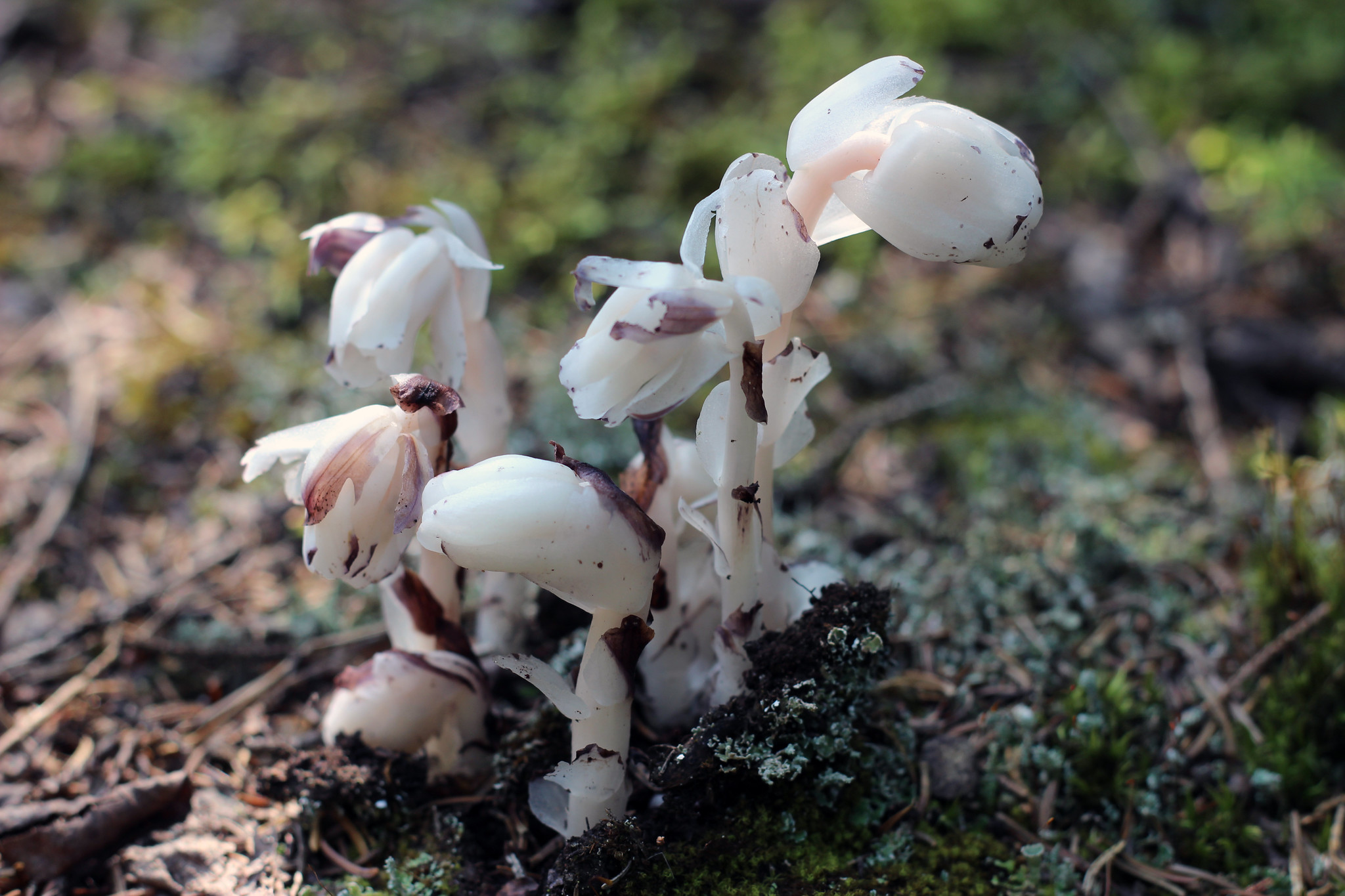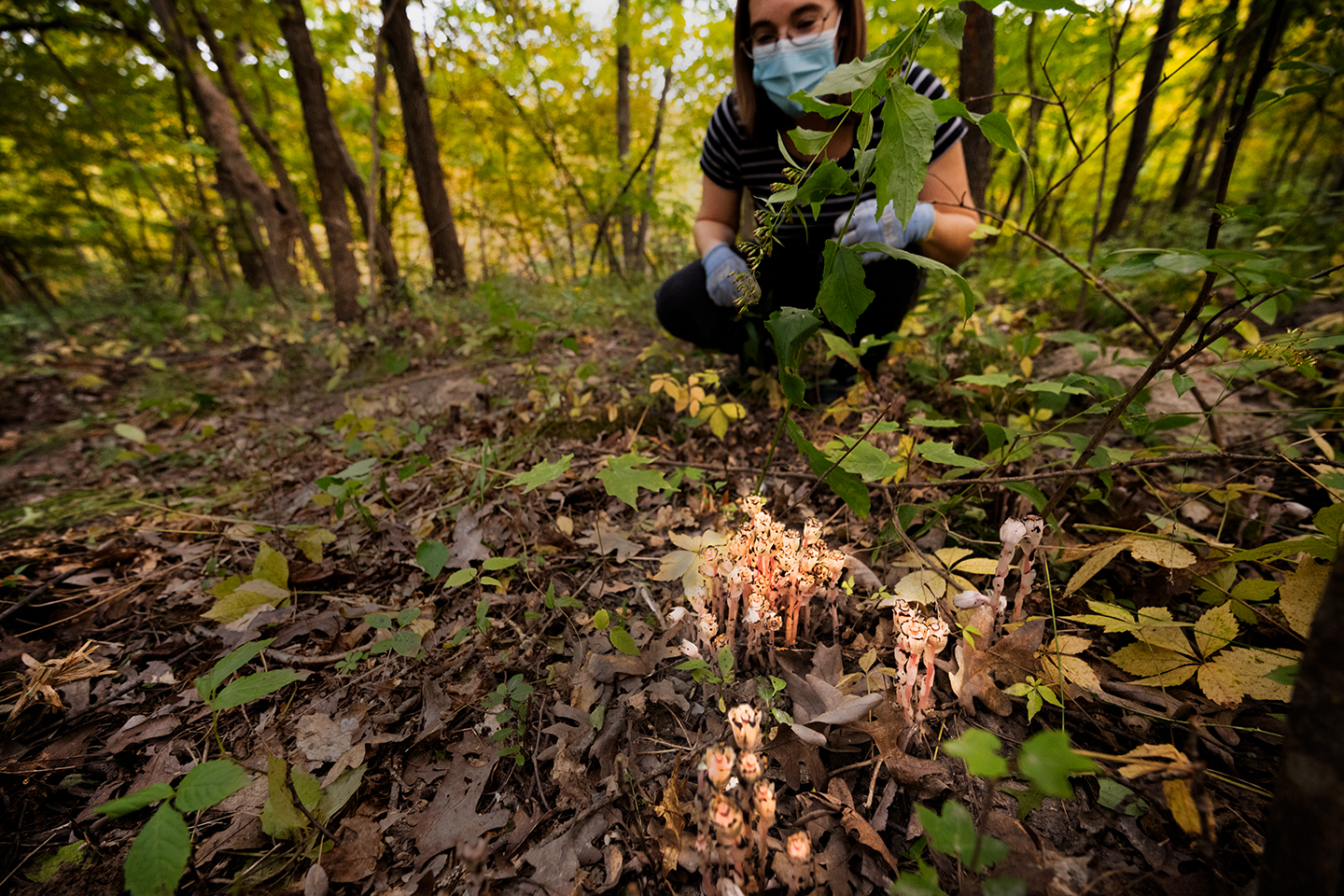Ghost Pipe

Ghost pipe looks like a fungi, but is actually a flowering, parasitic woodland plant. (Photo by Courtney Celley / USFWS)
Along the woodland bluffs of the Mississippi River in Dakota County, you might find an interesting plant in bloom: Ghost pipe (Monotropa uniflora, which is Latin for once-turned single flower), also known as ghost plant or corpse plant.
This plant doesn't look like most other woodland species. Pale, and almost ghostly, ghost pipe lacks chlorophyll. It has an unconventional way of obtaining energy: Ghost pipe is completely dependent upon other organisms for nutrients. The three-part relationship works like this: Trees have an existing symbiotic relationship with fungi. As the tree provides food in the form of sugar to the fungi, the fungi enable the tree to access water and nutrients in a more efficient manner. And ghost pipe draws food from the fungus without contributing anything back, making it a parasitic heterotroph.
Ghost pipe is a relative of blueberries and cranberries. The plant grows to about 10 inches, is waxy white in color and can be found from June through September. It grows in shady woods with rich soils and decaying plant material, and since it's not sunlight-dependent, it can grow in very dense understory. So when you're out in the woods looking for this funky parasitic plant, be sure to peek in places you wouldn't otherwise expect to find plant life.
For more information, please visit:

An FMR volunteer looks at a ghost pipe patch at Vermillion Falls Park. (Photo by Dodd Demas for FMR)